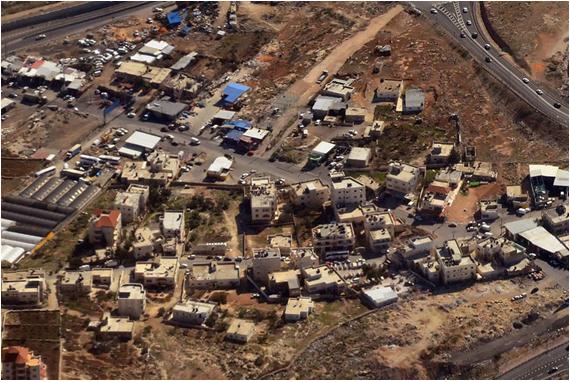For more than a week, the Israeli military has been severely restricting access to and from the Palestinian village of Hizma in the West Bank, apparently in response to stone-throwing along a nearby road. Soldiers have been deployed at all entrances to the village, and physical roadblocks have been put in place barring vehicular access. At various points during this time, only registered residents of the village have been allowed in, and men under 40 have not been allowed out.
B’Tselem has commented: “Restricting the freedom of movement of some 7,000 people constitutes collective punishment, which is prohibited under international law. While the first to suffer are the most vulnerable, those who have difficulty moving around to begin with, the restrictions affect all residents of the village and disrupt their daily lives. Yet again, this type of occurrence illustrates routine life under occupation and the Israeli military’s arbitrary use of its power in dealing with the Palestinian population.”
On Tuesday, January 16, at around 5:00 P.M., troops arrived at the village with bulldozers and blocked off the main – northern – entrance to the village with boulders, barring all entry and exit to vehicles. Soldiers were stationed at the two southern entrances to Hizma. One of the latter is near the village of Tublas and leads to a dirt road that connects it to Route 437 at an intersection close to the village of ‘Anata.
On Thursday morning, January 18, the military replaced the boulders at the northern entrance of Hizma with concrete blocks. Soldiers were stationed nearby and allowed no one to enter or exit the village at that spot until 7:00 P.M.
The next day (Friday, January 19), the military prevented entry to any Palestinian not registered as a resident of the village from the morning until 9:00 P.M. Men between the ages of 18 and 40 were not allowed to leave at all. These harsh constraints disrupted a funeral and a wedding held in the village that day.
The next morning (Saturday, January 20), the military reopened the two southern entrances to the village but left the concrete blocks in place at the northern entrance, so only pedestrians could get through there. On Tuesday morning, January 20, soldiers were once again deployed at all three entrances to the village and a gate was installed at the southern entrance adjacent to the village of Tublas. Only registered residents were allowed into Hizma. The roadblocks forced residents to drive on treacherous dirt tracks. This state of affairs remains in force.
There are precedents for the military’s closing off the entrances to Hizma, the most recent was in March and April 2017 when Israeli forces blocked the northern entrance to the village for 40 days and the two southern entrances for 20 days.
The village of Hizma lies northeast of Jerusalem, most of it on land included in Area C, which is under full Israeli control. Over the years, Israel has expropriated large swathes of land from the village. These have been used to establish the large settlements of Pisgat Ze’ev and Neve Ya’akov to the west, as well as the Separation Barrier, which cuts off the village from East Jerusalem. To the north of Hizma, Israel established the settlement of Geva Binyamin, and the settlement of Almon east of the village. Another 30 hectares (74 acres) of land were expropriated from village residents and used to pave Route 437, which runs close to the village.



